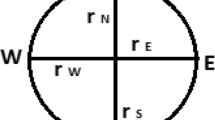Abstract
Variations in average fiber length and fiber length distribution both in the longitudinal and horizontal directions of a first-thinning Scots pine (Pinus sylvestris) stem and between six stems of similar age (26–30 years) and height (10.7–12.8 m) were studied. As a general trend, fiber length increased from the pith (0.8–1.3 mm) to the outer part of the stem (1.9–2.9 mm) maximizing at the relative stem height of 20–40%. Variations in fiber length between stems were smaller than those within a stem. The average fiber length of different stems of the same age (28 years) or diameter at breast height (11 cm) depended typically on wood growth rate. Finally, kraft cooking experiments on different parts of the stem (i.e., butt and top as well as inner and outer parts of the stem) indicated clear differences in their pulp properties. It was concluded that due to the acceptable properties of these pulps, first-thinning wood material as such or after the suitable fractionation may offer a potential source of fiber for a variety of different purposes.




Similar content being viewed by others
References
Alén R (2000) Structure and chemical composition of wood. In: Stenius P (ed) Forest products chemistry. Fapet Oy, Helsinki, Finland, pp 11–57
Anon (1999) Finland’s National Forest Programme 2010. Ministry of Agriculture and Forestry, publications 2/1999
Atmer B, Thörnqvist T (1982) The properties of tracheids in spruce (Picea abies Karst.) and pine (Pinus sylvestris L.). Department of Forest Products, Swedish University of Agricultural Sciences, Report no 134, Uppsala, Sweden, (in Swedish with English summary)
Brolin A, Norén A, Ståhl EG (1995) Wood and pulp characteristics of juvenile Norway spruce: a comparison between a forest and an agricultural stand. Tappi J 78(4):203–214
Brunden MN (1964) Specific gravity and fiber length in crown-formed and stem-formed wood. For Prod J 14:13–17
Dinwoodie JM (1961) Tracheid and fiber length in timber: a review of literature. Forestry 34(2):125–144
Duchesne I, Wilhelmsson L, Spångberg K (1997) Effects of in-forest sorting of Norway spruce (Picea abies) and Scots pine (Pinus sylvestris) on wood and fibre properties. Can J For Res 27(5):790–795. doi:10.1139/cjfr-27-5-790
Franklin GL (1945) Preparation of thin sections of synthetic resins and wood-resin composites, and a new macerating method for wood. Nature 155(3924):51. doi:10.1038/155051a0
Fries A, Ericsson T, Mörling T (2003) Measuring relative fibre length in Scots pine by non-destructive wood sampling. Holzforsch 57(4):400–406. doi:10.1515/HF.2003.059
Hakkila P (1989) Utilization of residual forest biomass. Springer-Verlag, Berlin, pp 100–140
Hakkila P (1998) Structure and properties of wood and woody biomass. In: Kellomäki S (ed) Forest resources and sustainable management. Fapet Oy, Helsinki, Finland, pp 116–185
Hänninen R, Kallio AMI (2007) Economic impacts on the forest sector of increasing forest biodiversity conservation in Finland. Silva Fenn 41(3):507–523
Hatton JV, Hunt K (1993) Chemical properties of juvenile and mature wood from second-growth jack pine. Cellul Chem Technol 27:17–32
Jylhä P, Keskinen N (2006) Properties of bundled tree sections of young Scots pine in debarking, chipping, and pulping. For Prod J 56(7–8):39–45
Lundquist S-O, Grahn T (2000) Fiber selection for pulp and paper products—opportunities and measurements. In: Usenius A, Kari P (eds) Proc COST E10 third workshop on measuring of wood properties, grades and qualities in the conversion chains and global wood chain optimization, 10–21 June, Dipole, Espoo, Finland VTT, pp 273–275
Marton R, Rushton P, Sacco JS, Sumiya K (1972) Dimensions and ultrastructure in growing fibers. Tappi 55(10):1499–1504
Peltola A (ed) (2006) Finnish statistical yearbook of forestry. Finnish Forest Research Institute, Helsinki
Rautiainen R, Alén R (2007a) Papermaking properties of the ECF-bleached kraft pulps from first-thinning Scots pine (Pinus sylvestris L.). Holzforsch 61(1):8–13. doi:10.1515/HF.2007.002
Rautiainen R, Alén R (2007b) Utilization of first-thinning Scots pine (Pinus sylvestris) as raw material for production of fine papers. Pap Puu 89(5):294–297
Rendle BJ (1960) Juvenile wood and adult wood. J Inst Wood Sci 1(5):58–61
Sikanen L, Vesisenaho T (1995) Raw material balance for debarking and chipping of pine pulpwood from first thinnings at a Finnish pulp mill. Pap Puu 77(5):345–350
Sirviö J (2001) Variation in tracheid properties of Scots pine (Pinus sylvestris L.). University of Helsinki, Department of Forest Resource Management, publications 28
Spångberg K (1999) Classification of Picea abies pulpwood according to wood and stand properties. Scand J For Res 14(3):276–281. doi:10.1080/02827589950152809
Thörnqvist T (1993) Juvenile wood in coniferous trees. Swedish Council for Building Research, Document D13, Stockholm
Toivanen T-J, Alén R (2006) Variations in the chemical composition within pine (Pinus sylvestris) trunks determined by diffuse reflectance infrared spectroscopy and chemometrics. Cellulose 13:53–61. doi:10.1007/s10570-005-9016-1
Varhimo A, Kojola S, Penttilä T, Laiho R (2003) Quality and yield of pulpwood in drained peatland forests: pulpwood properties of Scots pine in stands of first commercial thinnings. Silva Fenn 37(3):343–357
Yank KC, Benson CA, Wong JK (1986) Distribution of juvenile wood in two stems of Larix laricina. Can J For Res 16(5):1041–1049. doi:10.1139/x86-181
Zobel BJ, Blair R (1976) Wood and pulp properties of juvenile wood and topwood of the southern pines. J Appl Polym Sci 28:421–433
Zobel BJ, van Buijtenen JP (1989) Wood variation its causes and control. Springer-Verlag, Berlin and Heidelberg, pp 1–32, 72–131
Acknowledgments
Financial support from the Finnish Founding Agency for Technology and Innovation (TEKES), Jyväskylä Science Park and University of Jyväskylä is gratefully acknowledged. The authors wish to thank Mr. Veli Seppänen (VTT) for generously helping provide the first-thinning pine samples. The authors thank Mrs. Marian Marttina for her assistance with the fiber length measurements. Special thanks are due to Mr. Dan Asplund (Jyväskylä Science Park) for valuable discussions.
Author information
Authors and Affiliations
Corresponding author
Rights and permissions
About this article
Cite this article
Rautiainen, R., Alén, R. Variations in fiber length within a first-thinning Scots pine (Pinus sylvestris) stem. Cellulose 16, 349–355 (2009). https://doi.org/10.1007/s10570-008-9262-0
Received:
Accepted:
Published:
Issue Date:
DOI: https://doi.org/10.1007/s10570-008-9262-0




